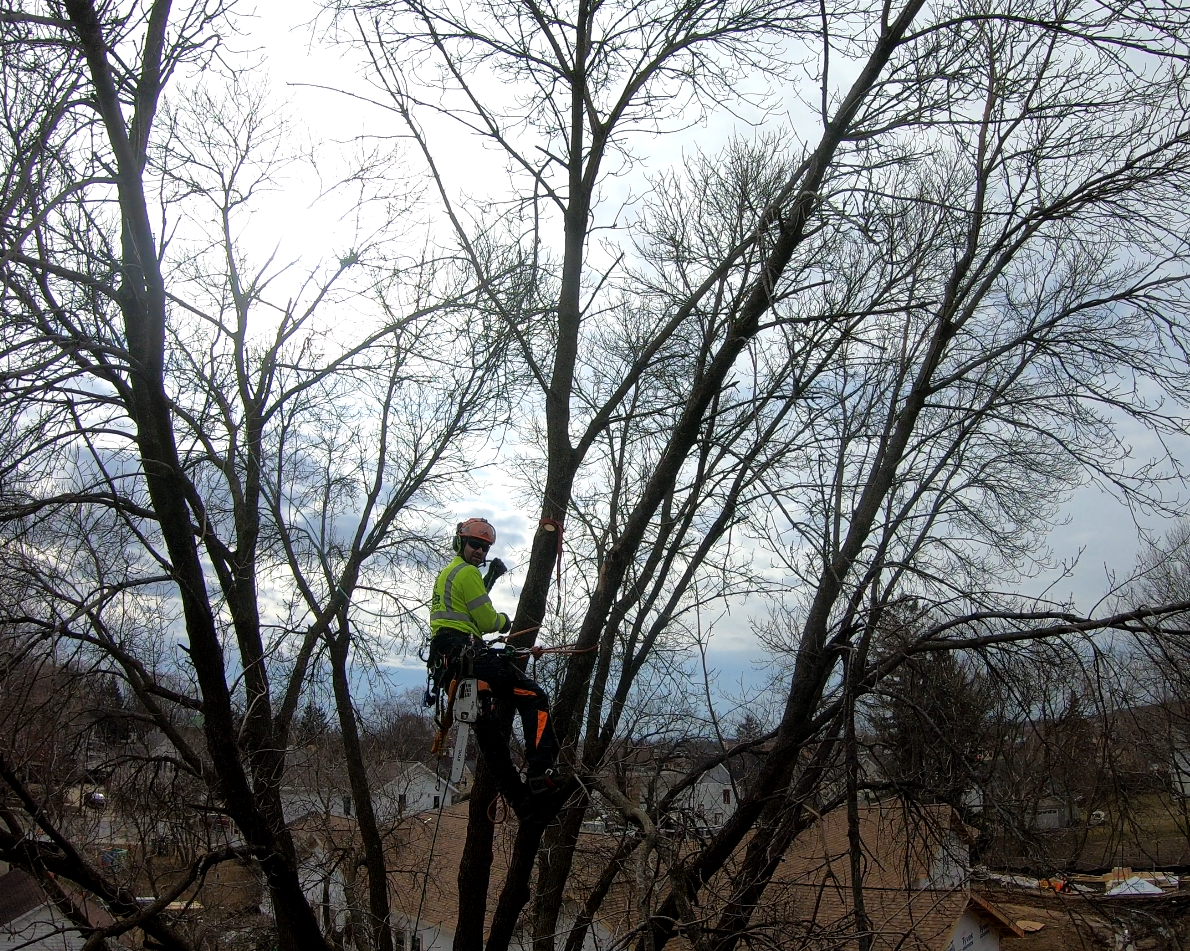Spring, Fall and Winter are the perfect times for pruning most trees.
Tree Pruning & Trimming
Types of Pruning ( a.k.a. Pruning Methods )
● Crown cleaning: Removes dead, broken, rubbing, crossed, dying, or diseased branches and foreign objects from the crown.
● Structural pruning: Trees should be pruned only for good reason and then only as much live material should be removed as is necessary to accomplish objectives. However, in areas where trees coexist with people and infrastructure, there are many reasons why pruning trees are necessary and vital. As a matter of fact, there are also many cases in which skilled pruning can be used to direct future growth into a sturdier tree architecture which will live longer, create less conflict with people and infrastructure, and greatly reduce hazards in the urban environment.
● Thinning: Increases light and air penetration and reduces mechanical stress by removing branches primarily from the outer edge of the entire crown, or from selected branches.
● Reduction: Pruning that decreases height and/or spread, applied either on an entire tree or on one or more specific sections only, through the use of reduction cuts.
Types of Pruning Cuts
● Reduction cut: Reduces the length of a branch or stem back to a live lateral branch large enough to assume the role of that limb’s new dominant growing end (i.e. apical dominance)—this lateral typically being at least one-third the diameter of the cut stem, and large enough to prevent bark death on the retained branch.
● Removal cut: Removes a branch back to the trunk or parent stem to just beyond the branch collar (sometimes referred to as a ‘collar cut’ ).
● Heading cut: 1) A type of pruning cut that severs a shoot or stem, that is no more than one year old, back to a bud; 2) Cutting a stem back to a lateral branch less than one-third its diameter; 3) Cutting a stem of any diameter to a node; — Heading cuts are less-frequently appropriate, but can be useful in certain situations. Heading cuts are sometimes used on large-diameter branches in a substandard pruning practice called ‘ topping’. Doing this inflicts permanent damage upon a tree and causes many problems, including massive decay in many species. Topping is a strongly discouraged practice which is not employed by Capital City Tree Experts.
Pruning Objectives: What is to be accomplished by pruning.
● Manage risk
● Manage tree health
● Develop desirable structure
○ Improve branch & trunk architecture by promoting or subordinating certain leaders, stems, or branches;
○ Promote or discourage growth in a particular direction;
○ Minimize future interference with traffic, lines-of-sight, infrastructure, or other plants;
○ Restore plants following damage and/or rejuvenate shrubs.
● Provide clearance —
○ Minimize current interference with structures, traffic, or other plants;
○ Maintain clear lines-of-sight and desired views;
○ Provide access to sites, buildings, etc. and/or comply with regulations
● Manage size or shape
● Improve aesthetics
● Manage production of fruit, flowers, or other products
● Manage wildlife habitat



